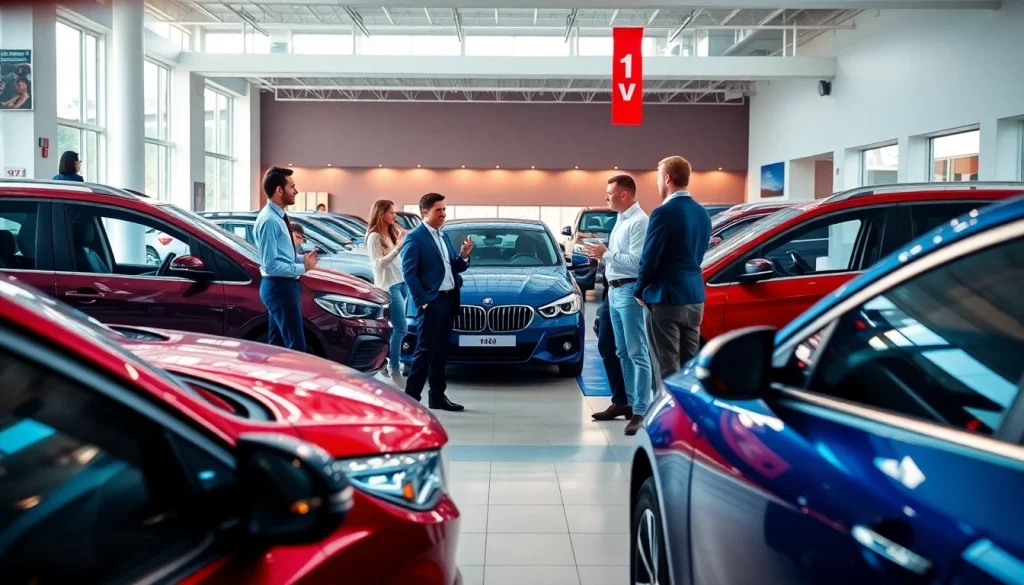Understanding Part Exchange
What is Part Exchange?
Part exchange refers to a transaction where a customer uses an existing asset, such as a vehicle, as part of the payment for a new purchase. This practice is commonly seen in various industries, particularly in automotive sales and real estate. When you opt for part exchange, the value of your old item is deducted from the cost of the new item, simplifying the purchasing process. For example, when buying a car, instead of selling your old vehicle privately—a process that can be time-consuming and uncertain—you can directly exchange it at a dealership and use its value towards the down payment of a new car. Learn more about the Part Exchange process to see how it can benefit you.
The Benefits of Part Exchange
Engaging in a part exchange transaction offers numerous benefits, both financially and logistically. Here are some key advantages:
- Convenience: The process is typically quick and hassle-free. You can handle the trade-in and purchase in a single visit to the dealership, saving you time and effort.
- Value Offset: The worth of your old vehicle is directly subtracted from the price of the new one, which can help reduce payments and make financing easier.
- No Need for Additional Selling Effort: By opting for a part exchange, you bypass the need to find a private buyer or deal with advertising and negotiating prices.
- Instant Valuation: Most dealerships can provide immediate feedback on your vehicle’s value, assisting you in understanding how much credit you’ll receive toward your next purchase.
How Part Exchange Works
The mechanics of part exchange are generally straightforward. Here’s how it typically works:
- Initial Assessment: You take your vehicle to a dealership, where it will be assessed by a professional evaluator.
- Offer Presentation: After inspection, the dealership makes you a part exchange offer based on factors like the vehicle’s condition, age, mileage, and market demand.
- Acceptance: If you agree to the offer, the value of your vehicle is deducted from the total price of the new vehicle you intend to purchase.
- Transaction Completion: You finalize the purchase of your new car, applying the trade-in value to the finance arrangement if applicable.
Part Exchange vs. Selling Privately
Pros and Cons of Part Exchange
When deciding whether to part exchange or sell your vehicle privately, it is essential to weigh the pros and cons of each method.
Pros of Part Exchange
- Immediate transaction without needing to wait for a buyer.
- Simplified process with less legwork involved compared to private selling.
- Advantage of trading your vehicle at a trusted dealership.
Cons of Part Exchange
- Possibly lower valuation compared to private sales.
- Less room for negotiation on the trade-in value.
- Dealers may offer less for a trade-in needing repairs or maintenance.
When to Choose Part Exchange
Choosing part exchange is ideal in various scenarios, including:
- You need to reduce the hassle of selling your vehicle privately.
- You are purchasing a new car that requires immediate financing.
- Your vehicle is older or in less-than-perfect condition, limiting its appeal to private buyers.
Valuation Comparison: Part Exchange vs. Private Sale
Understanding the valuation differences can help you make an informed decision. While private sales typically yield a higher sale price for your vehicle, part exchange offers a quicker, more efficient process. Based on current market trends:
- Private sales may generate an average of 10-20% more revenue compared to part exchange.
- Part exchange provides immediate liquidity which can be crucial for buyers needing to secure a new vehicle rapidly.
Getting the Best Deal on a Part Exchange
Preparing Your Vehicle for Trade-In
To maximize your part exchange offer, preparation is key. Here are some steps to consider:
- Clean and Detail: Thoroughly clean both the exterior and interior of your vehicle. A well-presented car can make a significant difference in its perceived value.
- Minor Repairs: Address small repairs, such as fixing dings, scratches, or replacing burned-out lights. These can enhance your vehicle’s appearance and value.
- Gather Documentation: Provide a complete history of your vehicle, including service records, which can assure the dealer of its maintenance.
Negotiating Your Part Exchange Offer
Understanding the negotiation process can help you secure a better offer. Here are some practical tips:
- Research your vehicle’s market value using online tools and comparison websites to understand what you should expect.
- Be prepared to justify your asking price based on your research and the vehicle’s condition.
- Don’t rush; take your time to discuss and negotiate the terms with the dealer.
Factors That Affect Part Exchange Values
Several factors can influence the value assigned to your vehicle during the part exchange transaction:
- Market Demand: The popularity of your vehicle make and model will significantly impact its resale value.
- Condition: A well-maintained vehicle in good condition will fetch a higher trade-in value.
- Mileage: Generally, lower mileage vehicles carry more value as they are perceived to have more life left in them.
- Previous Ownership: Vehicles with fewer previous owners are often valued higher.
Part Exchange for Different Vehicle Types
How to Part Exchange a Car
The process for part exchanging a car is largely outlined previously, but it also includes selecting the right dealership that specializes in the make of your vehicle, ensuring you maximize your trade-in value during the assessment.
Part Exchange for Motorcycles and Vans
Similar to cars, motorcycles and vans can also be part-exchanged. The evaluation process is designed to assess these vehicles based on their specific market dynamics:
- Motorcycles may be valued based on factors like engine size, brand desirability, and mileage.
- Vans’ value may heavily rely on their condition, use history (commercial or personal), and any included modifications.
Understanding Part Exchange in the Luxury Market
Luxury vehicles have a unique part exchange process due to their higher valuation and exclusivity. Factors to consider include:
- Luxury cars depreciate at different rates; knowing the market trends can help you get the best trade-in deal.
- Dealerships specializing in luxury vehicles are typically more educated on the car’s specific value characteristics, potentially leading to a better deal.
Common Questions About Part Exchange
Is Part Exchange Worth It?
Deciding whether part exchange is worth it depends on your individual circumstances. If ease and convenience are your primary concerns, part exchange can be a valuable option, despite possibly lower financial returns compared to selling privately. For buyers needing a new vehicle quickly, part exchange can save both time and effort.
Can You Part Exchange a Vehicle with Outstanding Finance?
Yes, you can part exchange a vehicle with outstanding finance. However, the process may involve settling the outstanding amount before or during the part exchange transaction. Dealerships can assist with this by calculating how much you owe and adjusting the trade-in offer accordingly.
What Happens if Your Car is Not in Good Condition?
Even if your vehicle is not in excellent condition, you can still engage in part exchange. Dealerships often take condition into account when determining value, but be prepared for a lower offer. It might be advantageous to weigh the benefits against the potential for a higher return through private sale, particularly if repairs could elevate the vehicle’s value significantly.





